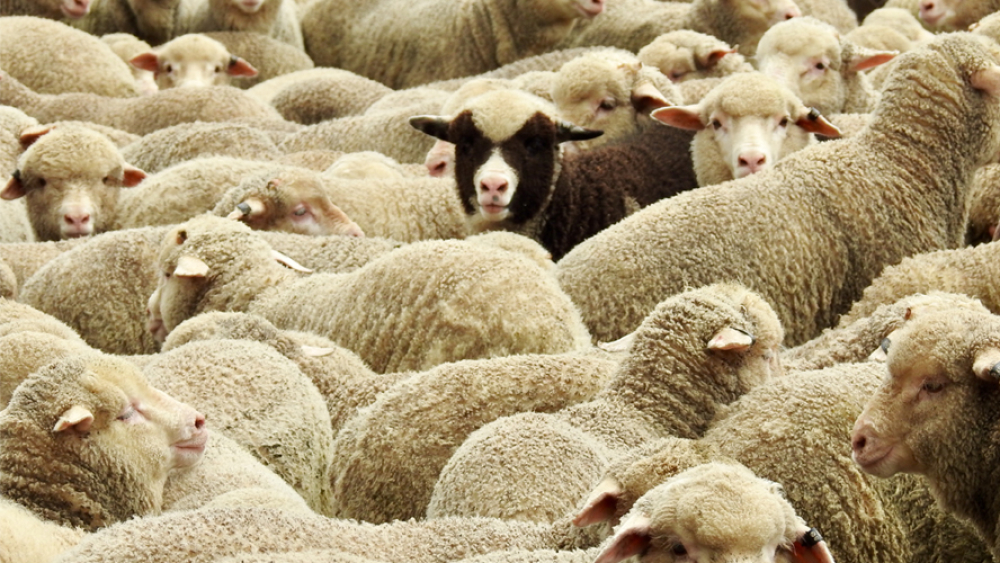Groupthink - a theory on how the hell those off-colour ads still make it across the line
31 Oct 2017

“Surely someone would have noticed this advert is straight-up racist,” is likely what goes through your head every time another campaign that has “missed the mark” makes its way through the final stages of sign off and onto TV screens and Facebook feeds across the globe.
The problem is, someone did notice. It’s quite likely that most of the senior staff and account directors noticed; as did middle management, the interns, even the janitors.
But no one said anything, and the advert was approved and pushed to go live, much to the dismay of, well, everyone everywhere.
“Why didn’t anyone say anything?” you might subsequently ask. “All it would have taken is one person to speak up and this catastrophe could have been avoided.”
The answer is Groupthink, a little phenomenon that the term’s coiner, Irving Janis, described as “A mode of thinking that people engage in when they are deeply involved in a cohesive in-group, when the members' strivings for unanimity override their motivation to realistically appraise alternative courses of action.”
The Yale psychologist started exploring the idea after the Bay of Pigs invasion in 1961, when a group of Cuban exiles, sent by the US government, attempted and failed to overthrow Fidel Castro’s Cuban government.
Small red flags snowballed into giant, flashing symbols of failure, and even though the light was blinding, President Kennedy’s staff felt so pressured to conform to his wishes, they dared not speak up. The effects were rather disastrous. So, how did it happen?
Aeon’s science writer Jane C Hu writes:
“To preserve unity, each individual member avoids being ‘the difficult one’ who rocks the boat; doubts go unvoiced. Insularity can exacerbate the problem; a team might descend further into its own cocoon, writing off any indications that its decisions or plans won’t work, and distancing itself from potential naysayers by viewing outsiders as dumb or even malicious.”
We all remember Kendall Jenner’s untimely effort to save the day with a can of Pepsi. No one at the board table uttered a peep, but the world certainly made its views on the advert clear, sending the likes of #PepsiGate, #BoycottPepsi and #PepsiLivesMatter straight up the ranks of trending hashtags on Twitter.
Then there’s Dove, who’s been accused of alluding to racism on more than one occasion, Snickers' homophobic “get some nuts” campaign, Protein World’s body-shaming “Are you beach body ready?” mishap, the list goes on. And on.
Of course, there’s the argument that there’s no such thing as bad press. On Dove’s latest misstep, Mary Harding, managing director at communications agency Tangerine told the Financial Times, “At the end of the day, whether the ad offends you or not it’s got everyone talking and it would be interesting to see the impact on sales.”
We certainly don’t suggest you adopt this as a strategy. In our industry, reputation is everything. So, how do you avoid Groupthink?
Hu suggests, “It helps for teams to get out of their usual rhythm. One way to do this would be to break up into smaller groups that can produce a more diverse set of ideas, providing more perspectives for the team at large. Inviting outside experts to share their views at meetings can also shake up the team dynamic, and prevent members from becoming too complacent about their own ideas.”
Lisa Quast for Forbes recommends, “Ask one or more team members to play the role of devil’s advocate to ensure all sides of a topic are explored and discussed. Or, divide the group into two and ask one team to present the pros and the other team to present the cons of each option.”
What’s the moral?
Avoid complacency at all costs and encourage critical thinking. The greatest campaigns didn’t change the face of advertising because everyone sat around a table and nodded in unison.
"The cost of being wrong is less than the cost of doing nothing." - Seth Godin
Please login to comment.
Comments